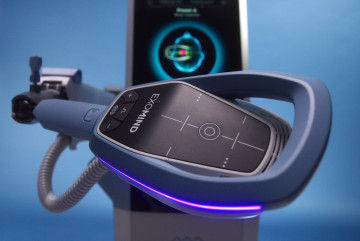TMS for Depression: How ExoMind is Transforming the Way We Treat Mood Disorders Without Medication
- Elizabeth Shrader
- May 18
- 3 min read
Depression continues to be a major global health challenge, affecting over 280 million people worldwide according to the World Health Organization (WHO) [1]. While traditional treatment modalities like pharmacotherapy and psychotherapy have been effective for many, a significant portion of individuals remain treatment-resistant—unable to achieve adequate relief through standard approaches. This is where Transcranial Magnetic Stimulation (TMS) steps in, and with the introduction of ExoMind TMS, a new era of personalized, brain-targeted depression treatment has begun.
What is TMS?
Transcranial Magnetic Stimulation (TMS) is a non-invasive, FDA-approved procedure that uses magnetic fields to stimulate specific areas of the brain known to be underactive in people with depression—particularly the left dorsolateral prefrontal cortex. TMS has been extensively validated for its efficacy in major depressive disorder (MDD), especially for individuals who have not responded to antidepressant medications.
TMS sessions are typically conducted five days per week over a four to six-week period, with each session lasting about 20-40 minutes. Unlike medications, TMS does not produce systemic side effects like weight gain, sexual dysfunction, or sedation.
Introducing ExoMind TMS: Next-Generation Brain Mapping and Treatment
ExoMind TMS builds on the proven foundation of conventional TMS by incorporating AI-driven brain mapping, real-time neurofeedback, and personalized treatment modulation. Its innovation lies in its integration of neurocognitive metrics and machine learning algorithms to adapt treatment protocols dynamically, based on individual neurobiological responses.
Key Features of ExoMind TMS
The text is already correct and does not contain any spelling or grammar mistakes.
Real-Time Feedback LoopsContinuous monitoring of brain activity allows for real-time adjustments during the treatment session, potentially increasing the therapeutic impact and reducing the number of sessions needed.
Enhanced Patient EngagementPatients receive visual feedback about their brain responses, which may improve adherence and outcomes.
Shorter, More Efficient ProtocolsSome preliminary studies indicate that ExoMind may reduce the total number of sessions required compared to traditional TMS models, thus lowering treatment burden.
Efficacy and Clinical Outcomes
In clinical trials and observational studies, TMS has consistently shown response rates of 50–60% and remission rates around 30–40% in patients with treatment-resistant depression [2]. While large-scale data on ExoMind TMS specifically are still emerging, early pilot studies suggest higher engagement and faster symptomatic improvement, particularly in patients with comorbid anxiety or cognitive dysfunction.
Who Can Benefit from ExoMind TMS?
ExoMind TMS may be particularly beneficial for:
Patients with treatment-resistant depression (TRD)
Individuals who experience side effects from antidepressants
People seeking non-pharmacological, brain-based therapy
Those with co-occurring cognitive symptoms, like brain fog or attention deficits
Safety and Side Effects
Like traditional TMS, ExoMind is considered very safe. The most common side effects include:
Mild to moderate scalp discomfort
Headache
Lightheadedness
Severe side effects, such as seizures, are extremely rare and typically occur only in those with predisposing neurological conditions.
The Future of Depression Treatment
The integration of artificial intelligence, neuroimaging, and individualized brain modulation in ExoMind TMS represents a significant advancement in the field of mental health care. As more data become available, this approach could become the new gold standard in treating not only depression but also other conditions like PTSD, OCD, and anxiety disorders.
If you or someone you know is struggling with depression and has not found relief through traditional means, ExoMind TMS may offer a promising new pathway to healing.

References
World Health Organization. (2021). Depression. Retrieved from https://www.who.int/news-room/fact-sheets/detail/depression
Gaynes, B. N., et al. (2014). Repetitive transcranial magnetic stimulation for treatment-resistant depression: a systematic review and meta-analysis. J Clin Psychiatry, 75(5), 477–489. doi:10.4088/JCP.13r08815
McClintock, S. M., et al. (2018). Consensus Recommendations for the Clinical Application of Repetitive Transcranial Magnetic Stimulation (rTMS) in the Treatment of Depression. J Clin Psychiatry, 79(1). doi:10.4088/JCP.16cs10905
Kaster, T. S., et al. (2022). Accelerated and Personalized rTMS Protocols: The Next Generation of Neuromodulation. Brain Stimulation, 15(2), 352–364. doi:10.1016/j.brs.2022.01.015




Comments